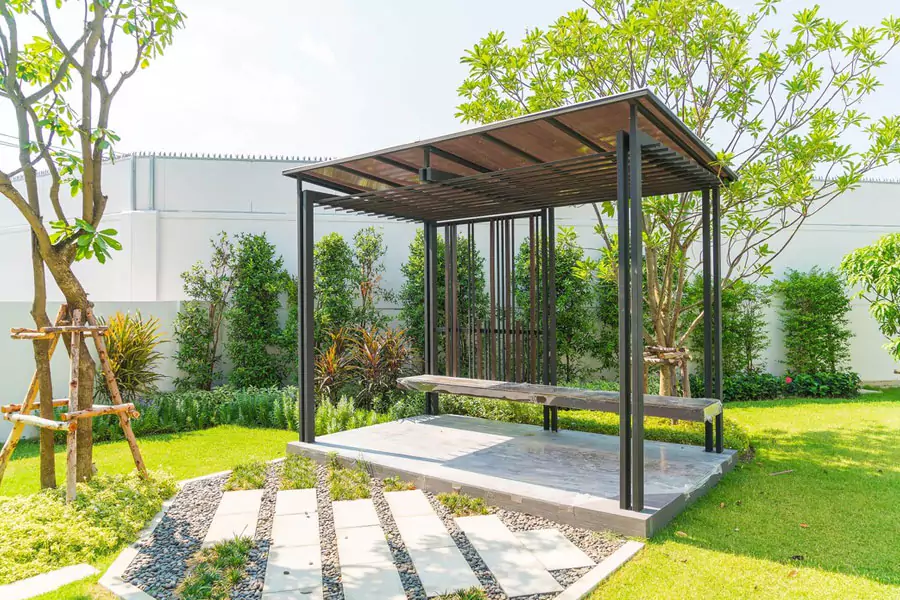Adding a deck or building a pergola in your home’s backyard means upgrading your home exterior and enhancing its aesthetics. Not only do these upgrades enhance the value of your home, but they will also make your backyard a better place to be. Before you hire an experienced deck contractor or start building a fence yourself, you should be aware of the permit requirements. San Carlos city has well-defined regulations for decks, fences, and pergolas installation, ensuring safety, boundaries of property, and utility for neighbors.
This guide will walk you through the most common permits and how to secure them easily.
The importance of Permits in San Carlos
Permits can be seen as additional paperwork, but it has a larger purpose. They make sure structures are constructed safely, in accordance with fire codes and in accordance with rules set by the neighborhoods. An investment is also secure in a properly permitted project. Buyers or inspectors check these at the time of the property sale. In the absence of permits, you are likely to be fined or asked to alter or demolish the structure.
It is much faster, safer, and hassle-free knowing the rules in advance.
San Carlos Deck Permits
Decks are the most favorite home additions for people in San Carlos. But you should check the local building regulations. You need a permit or Planning Division approval for any deck that is over 18 inches above grade or 30 inches above the ground.
The plans need to be wet-stamped and signed by a licensed structural or civil engineer. This measure will protect your deck to withstand the weight and seismic activity safely, which is a major concern in the Bay Area.
Lastly, the decks should have a minimum of three feet of separation from property lines. When you intend to construct inside that three-foot mark, it will be necessary to use non-combustible materials such as concrete, framing covered with stucco, or heavy timber marked as fire-resistant. This regulation provides an additional barrier between neighbors.
Following these rules in your design will prevent expensive delays and ensure you have a safe, durable, and compliant deck.

Know Fence Permit Requirements in San Carlos
Fences are not complex, but there are specific rules regarding height, the materials, and location in the city. In the majority of cases, fences lower than six feet will not need a permit provided that they remain entirely within your property line. This renders the simple construction of any typical wooden or chain-link fence simple.
Above six feet, though, you will have to have a permit for your fence. The same is true of masonry fences, regardless of the height, due to the superior structural loads. You will also require a permit, in case you are erecting a fence on top of a retaining wall, to ensure that the wall can handle it.
Corner properties make a significant impact on visibility. San Carlos has rules that require tall fences to be kept out of sight triangles at the intersections. That is, you cannot construct a strong, tall fence that would obstruct motorists or pedestrians.
In case your fence encroaches into the area between the sidewalk and the street, you will require an encroachment permit from the Local Public Works. This will provide safety to pedestrians and utility access.
By taking time and ensuring that your fence design is compliant with the city regulations, you gain peace of mind. You say goodbye to the hassle of reworking it or spoiling your relationship with your neighbors.
San Carlos Permit Rules for Pergolas
Pergolas add some shade, beauty, and character to the outside, yet they are also subject to city regulations. The size, location, and design will largely determine whether you will need a permit.
Building a small, detached, and decorative pergola may not require a permit, provided you observe the height and setback restrictions.
Nevertheless, where your pergola has a roof or is enclosed, there is almost always a building permit requirement. Big or high pergolas also need engineered designs to ensure the ability to apply wind loads and seismic stress.
Like decks, you need to consider the inspection from the Planning Division if you are planning to construct near a property line. You must also use special fire-rated materials.
Pergolas should be treated as mini-buildings, which is the safest way to go. Checking with the Building Division is a good idea before committing yourself to frustrating delays in the future.
Encroachment Permits: Involvement of Public Space
Public property is one of the areas that come as a surprise to many homeowners. When your project goes out into the publicly accessible area, like walks or the area between the curb and the street, you will require an encroachment permit. This is applicable to fence posts, deck stairs, or pergola footings transgressing the property line.
An encroachment permit ensures the utility protection, safety of pedestrians, and the avoidance of damage to city infrastructure. It may have certain conditions, such as the restoration of sidewalks or clearance around utilities.
Don’t know where your property begins and ends? Survey it first before construction. Boundaries are much easier to check than an already built structure.
Checklist to Submit: You’ll Need
When you are seeking a permit with the right documents, it will be more expedited. In the case of decks and bigger pergolas, you would need to provide:
- An application form filled out fully at a building permit office.
- Plan of the site with property lines and setbacks.
- Structural drawings and calculations.
- Stamped plans, where needed by the engineer.
Failure to identify details will cause the Building Division to give corrections, which will slow the approval. Even a call to the city by emailing before submission can save days or even weeks.
Hire Our Licensed and Seasoned Contractor
The most convenient method of simplifying the permit process would be to hire our licensed contractors. Our professional contractors are familiar with San Carlos’ building regulation needs and can make code-compliant installations. You may also require a licensed structural engineer in case of large or raised decks or very complicated pergolas.
Although you might be doing a small do-it-yourself job, keep in mind that, as a homeowner, you are the one who is accountable for compliance. When one of your projects requires a permit and you do not do it, you will be responsible, not your handyman or installer.
For Free Estimate Book Now
+1-650-465-2649

